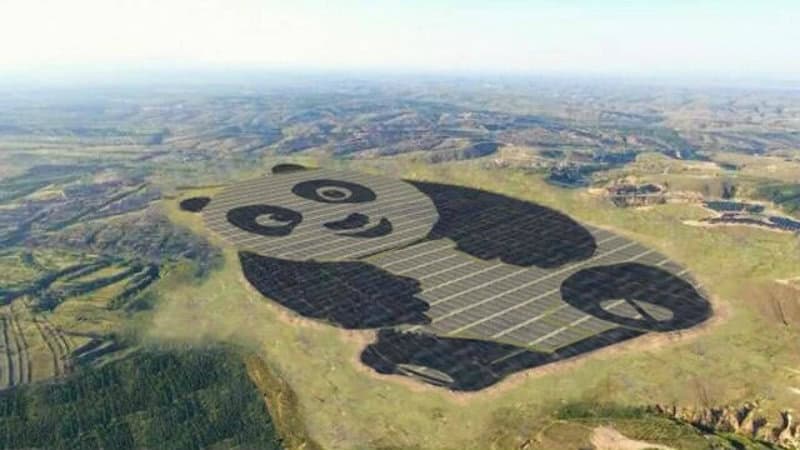DATONG, Shanxi – Last week China unveiled the world’s first power plant that’s shaped like its national animal – Giant Panda – in one of the cutest plans to tackle climate change.
The first phase of the Panda Power Plant, which covers a total area of 248 acres, was connected to the grid on June 29 near the northern city of Datong, in Shanxi province.
The design of the plant was possible using black single crystalline silicon solar cells from a Chinese company and white thin-film solar cells supplied by First Solar in the US.
Not only is the panda-shaped solar farm adorable, it’s also projected to reduce 2.74 million tons of carbon dioxide emissions over a period of 25 years, according to Panda Green Energy, a Hong Kong-based eco-development solutions provider.

The company built the power plant in agreement with the United Nations Development Program (UNDP) to promote renewable energy.
In addition to generating electricity, the plant is scheduled to open summer camps for young people so they can gain a “deeper understanding of green energies and first-hand experience of environmental protection,” UNDP wrote in a statement.
“By designing the solar power station into the pattern of a panda, we aim to stimulate teenagers’ interest and enthusiasm for solar energy application,” Alan Li, CEO of China Merchants New Energy Group said last year. “To cope with the climate change, we should not only appeal to the governments and companies, but also need to motivate every household, getting the next generation involved in, thus making joint efforts for a green future.”
China Merchants New Energy Group, Panda Green Energy’s largest shareholder, worked with the United Nations Development Program last year to involve youth in innovation design contests.
Panda Green Energy’s Panda 100 Program plans to build many more adorable green energy sites – enough to power 3.2 billion kWh of green electricity over 25 years, the company said in a statement. That’s comparable to saving 1.056 million tons of coal, or reducing 2.74 million tons of carbon dioxide emissions, the project notes.














